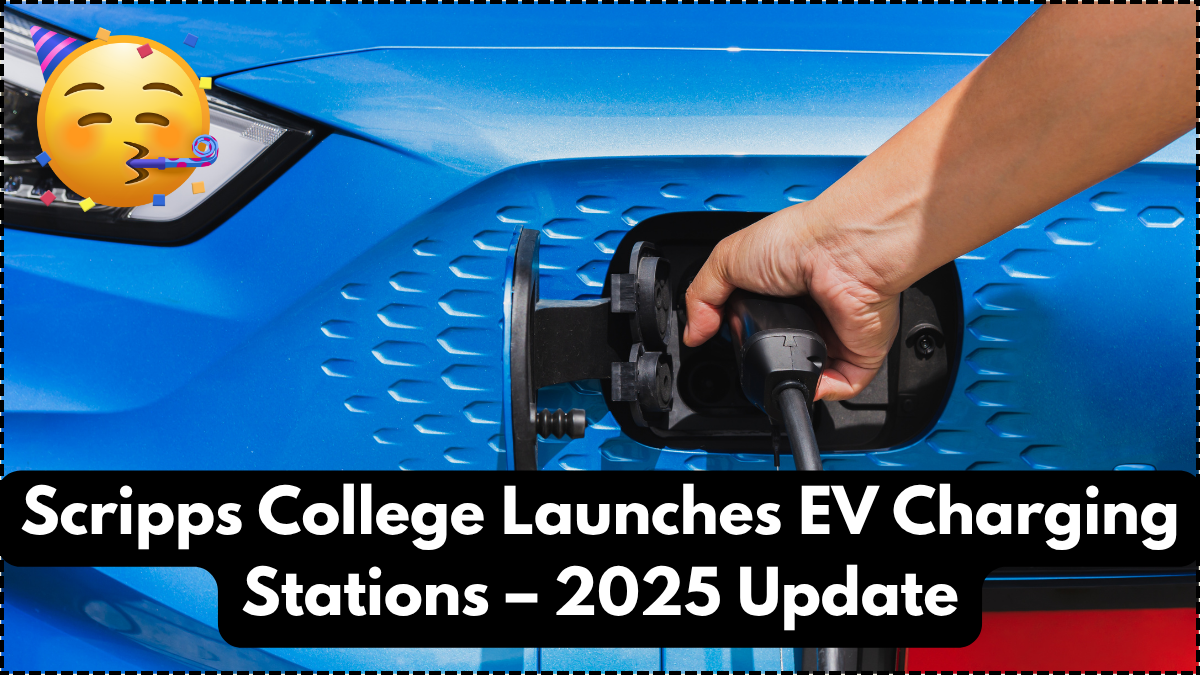Scripps College has taken a bold step toward environmental sustainability and modern convenience with the launch of its On‑Campus EV Charging Stations 2025. As electric vehicles (EVs) continue to surge in popularity across the U.S., colleges like Scripps are stepping up to support this shift by investing in infrastructure that supports green campus transport. The project marks a significant milestone in the college’s ongoing efforts to reduce its carbon footprint and promote eco-conscious commuting options for students, faculty, and visitors.
Strategically placed throughout the campus, these new charging stations reflect more than just modern infrastructure. They serve as a symbol of forward-thinking planning, energy responsibility, and a commitment to a cleaner future. Students and faculty who drive electric vehicles can now charge conveniently while attending classes, meetings, or events—without needing to leave campus in search of off-site stations. It’s a major enhancement to both environmental policy and daily campus life.

Advancing Green Transport on Campus
The installation of the On‑Campus EV Charging Stations 2025 is part of a wider initiative at Scripps aimed at enhancing green campus transport. This includes the promotion of cycling, shared electric scooter use, and future plans for campus-wide electric shuttle services. The effort ensures that all forms of clean mobility are supported, making the campus more accessible and less dependent on fossil-fuel-based vehicles.
To encourage adoption, the college has integrated these charging stations into student orientation materials, transportation planning brochures, and sustainability workshops. The project is already being studied as a model by nearby institutions and municipalities, who are looking to Scripps as a leader in eco-infrastructure design.
Key highlights of the EV station project include:
-
Level 2 and DC fast charging options for faster turnaround
-
Accessible 24/7 with digital ID verification for students and staff
-
Renewable energy-supported systems powered partly by solar grids
-
Real-time availability tracking via campus mobility app
-
Integration with public transport initiatives, including National Rail link access
Infrastructure That Supports Clean Innovation
The new charging network is designed not only for convenience but also for smart energy usage. Every unit monitors electricity demand in real-time and adjusts power output to avoid grid overloads. These features are essential to ensure long-term sustainability and allow for more EVs to be charged simultaneously without impacting other power needs on campus.
With the inclusion of National Rail integration and local transport mapping, students and faculty can now plan multimodal routes that involve both public and private transport. A student can, for example, take a National Rail train to Claremont, ride an e-bike or electric shuttle to campus, and charge their EV while attending classes.
Comparison of Charging Station Features
Here is a table comparing the key attributes of the newly installed Scripps EV charging stations:
| Feature | Description | Benefit |
|---|---|---|
| Charging Types | Level 2 and DC Fast Charging | Suits all EV models and needs |
| Access | App-based ID verification | Secure and exclusive for campus users |
| Energy Source | Solar + Grid Hybrid | Promotes renewable energy use |
| Integration | Public Transit & National Rail | Encourages intermodal green travel |
| Availability Tracking | Real-time through campus mobility app | Reduces wait time and maximizes use |
This cutting-edge system puts Scripps at the forefront of campus-based sustainability solutions in 2025.
Student and Faculty Engagement
The launch has been met with enthusiasm across the Scripps community. Student clubs focusing on sustainability and environmental science have already begun hosting awareness events centered on EV technology and sustainable commuting. Faculty members from the environmental studies department have collaborated to integrate these developments into the academic curriculum, helping to link classroom theory with practical green infrastructure on campus.
Furthermore, students commuting from outside Claremont now have better options to use their electric cars in conjunction with public transit like National Rail, further reinforcing the value of the On‑Campus EV Charging Stations 2025.
Conclusion
The implementation of the On‑Campus EV Charging Stations 2025 marks a defining moment in Scripps College’s environmental journey. By actively encouraging green campus transport and connecting their efforts with National Rail and other transit systems, Scripps is transforming its campus into a model of clean, accessible, and smart mobility. As EV ownership rises, these efforts position the college as not just an academic institution, but a sustainability pioneer in higher education. It’s clear that the steps taken today will power the future of tomorrow.
FAQs
What types of EVs can use the on-campus charging stations?
The stations support both Level 2 and DC fast charging, making them compatible with nearly all electric vehicles currently on the market.
Are the EV charging stations available to visitors?
Yes, visitors can use the charging stations during campus hours with temporary access through the campus mobility app.
How does this initiative support green campus transport?
The project reduces reliance on fossil fuels and integrates with other sustainable transport modes like e-scooters, bikes, and public transit.
Is the electricity from renewable sources?
Yes, the stations are partly powered by solar energy, helping to lower the carbon footprint of each charge.
Will more stations be added in the future?
Yes, Scripps plans to expand the network based on usage trends and feedback from students and staff.
Click here to learn more